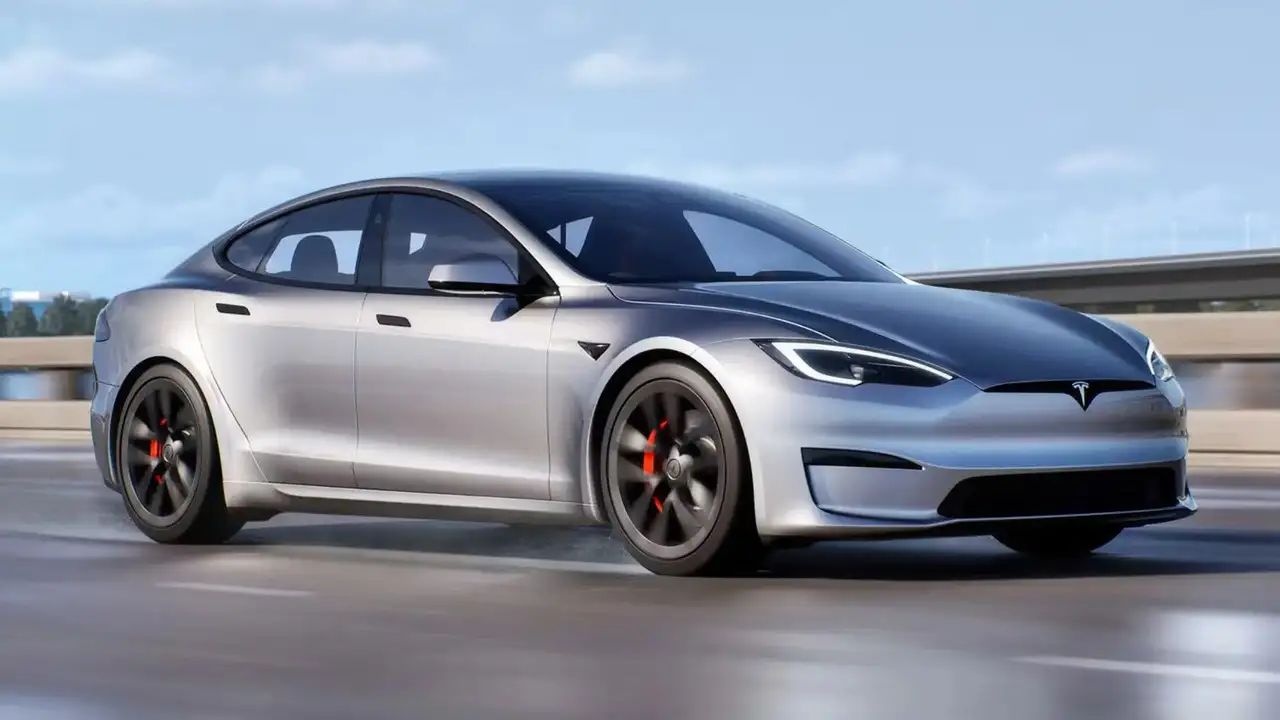
Electric vehicles (EVs) have surged in popularity, promising a greener future and relief from the fluctuating prices at the gas pump. For many consumers, the allure of silent operation, instant torque, and reduced emissions is undeniable. However, beneath the polished exterior and cutting-edge technology lies a crucial component that can profoundly impact the long-term ownership experience and financial viability of these vehicles: the high-voltage traction battery.
While the initial purchase price of an EV is often a significant consideration, a deeper dive into the potential costs associated with maintaining these advanced machines reveals a less discussed, yet equally critical, financial reality. All batteries, regardless of their sophisticated design, will eventually experience diminished capacity and require replacement. This isn’t a unique challenge for EVs, as anyone who has seen their smartphone’s battery life dwindle over time can attest. Yet, the scale and cost of an EV battery replacement are in an entirely different league, potentially amounting to tens of thousands of dollars.
This article aims to provide consumers with an in-depth, data-driven understanding of electric vehicle battery health, longevity, and the financial implications of replacement, drawing directly from extensive research and insights. We’ll explore the factors that influence battery lifespan, the steep costs associated with replacement, the limitations in sourcing new batteries, and what consumers need to know about warranties and emerging repair options. Our goal is to empower you with the knowledge needed to make informed decisions and potentially avoid the shock of a substantial battery replacement expense, particularly if it arises prematurely before the typical ownership cycle of seven years.

1. **The Inevitable Truth: All EV Batteries Will Eventually Need Replacement**One of the most fundamental insights into electric vehicle ownership is that, without exception, “All EV batteries will eventually fail to hold a charge and require replacement.” This statement underscores a universal principle applicable to all rechargeable battery technologies. Just as the battery in your smartphone or laptop loses some of its effectiveness over time, the sophisticated traction batteries in electric vehicles are also subject to degradation through repeated charging and discharging cycles.
This degradation isn’t a design flaw but an inherent characteristic of battery chemistry. Over time, the internal components of a battery undergo changes that reduce its ability to store and deliver electrical energy effectively. While this might manifest as a minor inconvenience in smaller electronic devices, in an EV, it translates directly into reduced driving range and, eventually, a battery that can no longer adequately power the vehicle. Recognizing this inevitable decline is the first step in understanding the long-term commitment of EV ownership.
The context explicitly states that “How a device is charged and how quickly that energy is depleted also determines how long a battery will last.” This highlights that while degradation is inevitable, the *rate* at which it occurs can be influenced. Consumers, therefore, play an active role in extending the useful life of their EV battery through careful management of their charging and driving habits. However, despite best practices, the day will eventually come when replacement becomes necessary, making awareness of the associated costs paramount.

2. **Unpacking the High Cost: Why EV Battery Replacements Break the Bank**Perhaps the most daunting aspect of EV battery ownership, outside of the initial purchase, is the potentially exorbitant cost of replacement. The provided context paints a clear, and somewhat alarming, picture: “Replacing an EV battery, regardless of the type of electric vehicle, is an expensive undertaking.” This cost can indeed be a significant financial burden, with prices that can be “north of $10,000 for popular vehicles like the Tesla Model S or Model 3.” These figures alone are enough to give any potential EV buyer pause.
To put this into concrete terms, specific examples from a survey of mechanics reveal just how high these costs can climb. For a 2014 Tesla Model S, the average total cost for a battery replacement was estimated at an staggering $15,000, broken down into $13,500 for parts and $1,500 for labor. A 2014 Nissan Leaf presented an even higher parts cost at $17,269, leading to an average total of $17,657 once labor ($388) was included. Even for hybrid vehicles, which often use smaller battery packs, the cost is not negligible; replacing the traction battery in a 2014 Toyota Prius, for instance, averaged nearly $4,500 ($3,858 for parts and $631 for labor).
Several factors contribute to these astronomical figures. The “make and model” of the vehicle plays a crucial role, as “Some EVs use more expensive battery technologies or larger battery packs, which can significantly increase replacement costs.” Furthermore, “labor costs” can differ substantially “depending on the location and the complexity of the battery replacement process for the specific vehicle.” These intricate details emphasize that the cost is not uniform and requires careful consideration of the specific vehicle in question.
Read more about: Unveiling the True Cost: A 7-Year Step-by-Step Guide to Calculating Ownership Expenses

3. **The Manufacturer Monopoly: Sourcing and Availability Challenges**Compounding the high cost of EV battery replacement is the significant challenge of sourcing a new battery. Unlike conventional internal combustion engine parts, which often have a robust aftermarket, the EV battery market is currently dominated by vehicle manufacturers. The context explicitly states, “Electric vehicle owners are limited in where they can get batteries, with most being forced to go through the manufacturer.” This creates what is effectively a manufacturer monopoly, leaving consumers with limited options and little room for price negotiation.
The scarcity of alternative sourcing options is further highlighted by the fact that “Used EV batteries are hard to come by, and they usually come secondhand from a wrecked EV.” This limited supply of used components means that finding a significantly cheaper alternative to a new manufacturer-supplied battery is often a fruitless endeavor. The situation is exacerbated by the observation that “(Third-party manufacturing doesn’t really exist at the time of publishing),” meaning there are few, if any, independent companies producing compatible replacement batteries to introduce competition and potentially drive down prices.
This reliance on the original equipment manufacturer (OEM) for replacement batteries has profound implications for consumers. It means that the cost of the battery is largely dictated by the manufacturer, with little external market pressure. For owners, this translates into higher prices and potentially longer wait times, especially if specific battery packs are not readily available. Understanding this supply chain dynamic is essential for anyone considering the long-term financial commitment of an electric vehicle.

4. **Warranty Protections: Understanding What’s Covered (and What’s Not)**Given the high cost of EV battery replacement, understanding the warranty is absolutely critical for any electric vehicle owner. Fortunately, “electric vehicles sold in America comes with a very generous warranty — usually eight years or 100,000 miles (whichever comes first).” This extensive coverage provides a vital safety net for consumers, protecting them from unexpected, premature battery failures within a significant period of ownership.
However, it’s paramount to delve into the specifics of what these warranties actually cover, as not all are created equal. The context highlights a key distinction: “Some warranties only cover the EV battery if it no longer holds a charge at all.” This means that if your battery experiences significant degradation, leading to a drastically reduced range but is still technically functional, it might not qualify for replacement under such a warranty. This subtle but crucial detail can leave owners with a highly diminished vehicle that is technically “working” but far from its original performance.
In contrast, “others will cover the replacement of any EV battery that has dropped below 60% or 70% of its maximum capacity.” This type of warranty offers a much more robust protection, as it accounts for the gradual, yet impactful, decline in battery performance. Consumers are strongly advised to meticulously review the warranty terms for any EV they consider, paying close attention to the specific thresholds for capacity degradation that trigger coverage. This due diligence can save thousands of dollars and prevent significant disappointment if a battery’s performance falls short of expectations before the warranty period expires.

5. **The Promise of Repair: A Glimmer of Hope for Cost Reduction**While the current landscape of EV battery replacement costs can appear bleak, there is an emerging trend that offers a glimmer of hope for consumers: the growing industry of EV battery repair. The context notes that “EV battery repair is a growing industry that may help you avoid the high cost of a replacement, but it’s not commonly available yet.” This signifies a shift from the all-or-nothing approach of full battery replacement towards more targeted, and potentially more affordable, solutions.
The core principle behind battery repair involves addressing individual faulty components rather than replacing the entire battery pack. “Traction batteries are typically assembled in a series of battery modules that are connected to make a battery pack.” This modular design is key to the repair concept. Instead of discarding an entire, enormously expensive battery pack, technicians can identify and replace only the degraded or failed modules within the pack. This precision approach is a significant step towards more sustainable and economical EV maintenance.
The potential for cost savings is substantial. As the context explains, “In cases where repair is an option, replacing individual modules instead of the entire pack can reduce costs dramatically.” This is particularly relevant when considering the scenario where only a few cells or modules within a large pack have failed, rather than the entire unit. While still in its nascent stages and not yet widely available, the growth of the EV battery repair industry offers a promising future for mitigating the long-term financial impact of battery degradation, providing a much-needed alternative to expensive full replacements. Consumers should keep an eye on the development of these services in their local areas.

6. **Driving Habits: How Your Foot on the Pedal Impacts Battery Life**Beyond the intrinsic chemical processes of degradation, how an electric vehicle is driven plays a significant, consumer-influenced role in the longevity of its high-voltage traction battery. The way a driver accelerates, brakes, and maintains speed directly translates into the stress placed upon the battery cells. Just as aggressive driving can wear down tires and brakes faster in a gasoline car, it can accelerate the aging process of an EV battery.
The context explicitly states that “Frequent acceleration and high-speed driving can stress the battery and shorten its lifespan.” This means that drivers who regularly engage in rapid take-offs or push their vehicles to sustained high speeds are, in essence, demanding peak power output from their battery more often. These high-power demands generate more heat within the battery pack and contribute to faster chemical degradation over time. It’s a trade-off between enjoying the EV’s instant torque and preserving battery health.
Conversely, a smoother, more conservative driving style can contribute to extended battery life. Gentle acceleration, anticipating traffic to minimize hard braking, and maintaining moderate speeds reduce the sudden power surges and drains on the battery. This allows the battery to operate within more optimal temperature and load parameters, thereby slowing the rate of capacity loss. While the thrill of an EV’s performance is undeniable, understanding this direct correlation empowers owners to make conscious choices for long-term battery health.
Ultimately, the goal isn’t to shy away from using your EV’s capabilities entirely, but rather to be mindful of how driving habits impact this crucial component. Incorporating smoother driving techniques into daily commutes can be a simple yet effective strategy for extending the period before noticeable degradation, or even eventual replacement, becomes a pressing concern. It’s a habit-based adjustment that can translate into significant financial savings and a longer-lasting vehicle.

7. **Charging Practices: Optimizing for Longevity, Avoiding Rapid Decay**The way an electric vehicle owner charges their battery is another pivotal factor under direct consumer control that significantly influences battery lifespan. Charging practices, from the type of charger used to the state of charge maintained, can either preserve or prematurely degrade the battery’s capacity. Understanding and implementing optimal charging routines is paramount for maximizing the investment in an EV.
A key insight from the context reveals that “Regular use of fast chargers can degrade battery cells faster than slow, level 1 or level 2 charging.” While the convenience of rapid DC fast charging is appealing, especially on long trips, relying on it as a primary charging method can impose undue stress on the battery. Fast charging generates more heat and pushes electrons through the battery at a higher rate, which can lead to accelerated degradation of the internal cell chemistry. For daily use, prioritizing slower, less intensive charging methods, such as standard Level 1 (120V) or Level 2 (240V) at home or work, is generally more beneficial for battery health.
Furthermore, the context provides a crucial guideline for maintaining battery longevity: “Keeping the battery between 20% and 80% state of charge is ideal for longevity.” Consistently charging a battery to 100% or allowing it to frequently drop below 20% can put additional strain on the cells. Operating within this “sweet spot” minimizes stress on the battery’s chemical components, as it avoids the extreme ends of the charge cycle where the battery experiences the most wear. This recommendation offers a practical, actionable strategy for EV owners to actively manage their battery’s health on a day-to-day basis.
This practice extends to long-term storage as well; if an EV is to be parked for an extended period, maintaining its charge within this optimal 20-80% range is recommended to prevent excessive degradation. By being mindful of charging frequency, prioritizing slower charging for routine needs, and adhering to the recommended state of charge limits, consumers can significantly contribute to the enduring performance and lifespan of their EV battery, potentially delaying the need for costly replacements.

8. **The Climate Challenge: How Temperature Extremes Impact Performance**The environment in which an electric vehicle operates, particularly the prevailing climate conditions, exerts a substantial influence on battery performance and longevity. While consumers cannot control the weather, understanding these environmental impacts allows for informed decisions regarding vehicle storage and operation. Extreme temperatures, both hot and cold, present distinct challenges to EV battery health.
The context clearly states that “Extreme heat or cold can negatively affect battery performance.” Focusing first on warmth, it notes that “Batteries in hot climates tend to degrade faster.” High ambient temperatures can accelerate the chemical reactions within the battery cells that lead to degradation. Prolonged exposure to intense heat, especially combined with frequent fast charging or aggressive driving, can reduce a battery’s overall capacity more quickly than in temperate climates. This makes active thermal management systems within EVs particularly crucial in warmer regions, but even with these, heat remains a significant factor in long-term battery health.
Conversely, cold temperatures also affect battery performance, though typically in a different manner. The context explains that “cold temperatures can temporarily reduce range.” In colder conditions, the chemical reactions inside the battery slow down, making it less efficient at delivering power. This often results in a noticeable reduction in the vehicle’s available driving range, as well as potentially slower charging speeds. However, unlike extreme heat, which contributes to permanent degradation, the effects of cold are largely temporary; once the battery warms up to its optimal operating temperature, its performance typically returns to normal.
While owners in extreme climates cannot change their surroundings, they can mitigate some impacts by parking in shaded or garaged areas during hot spells, and preconditioning the battery (heating it) while still plugged in during cold weather, if the vehicle allows. Being aware of these climate-related factors is vital for managing expectations regarding range and for taking proactive steps to protect the battery, thereby extending its useful life and avoiding premature performance issues.
Read more about: The Hidden Costs: Unmasking the Real Reasons Your Electric Bill Exploded After Bringing Home an EV

9. **Vehicle Type Matters: Differences in Battery Lifespan for Hybrids vs. Pure EVs**The type of electric vehicle a consumer chooses—whether a traditional hybrid, a plug-in hybrid (PHEV), or a pure battery electric vehicle (BEV)—has a tangible impact on the expected lifespan and typical degradation patterns of its traction battery. These different vehicle architectures utilize their batteries in fundamentally different ways, leading to varying longevity outcomes and replacement cost expectations.
The context explains these distinctions well: “Hybrid vehicles have traction batteries that work in conjunction with a small internal combustion engine to propel the vehicle forward and recharge the battery.” These batteries are typically smaller and are cycled more frequently but within a much narrower state-of-charge range, often not fully discharging or charging. “Plug-in hybrid vehicles take this concept a bit further by providing a slightly larger EV battery that can provide 15 to 42 miles of total range before the internal combustion engine kicks in to charge the traction batteries and provide forward motion.” PHEV batteries are larger than hybrids and are designed to be discharged and recharged more fully.
In stark contrast, “Electric vehicles don’t have any internal combustion engines. Instead, they use huge traction batteries to power the multiple electric motors in each vehicle.” These batteries are much larger, carry the full burden of propulsion, and are subject to deeper discharge and charge cycles. The difference in usage patterns translates directly to lifespan estimates. The context states that “Popular models like the Toyota Prius have batteries that generally last eight to 15 years,” which is a considerable range, whereas “pure electric models like the Nissan Leaf have batteries that last around eight to 10 years.”
This distinction underscores why the average replacement cost for a hybrid like the 2014 Toyota Prius was significantly less, at nearly $4,500, compared to the $17,657 for a 2014 Nissan Leaf. The smaller size, less demanding usage profile, and potentially different battery chemistry in hybrids often result in a longer lifespan and lower replacement cost when compared to the large, constantly working battery packs in pure EVs. For consumers, understanding these inherent differences based on vehicle type is crucial for setting realistic expectations about long-term battery durability and associated expenses.

10. **Early Warning Signs: Recognizing a Failing EV Battery**Despite best efforts in managing driving and charging habits, and accounting for climate impacts, EV batteries will eventually show signs of degradation. Recognizing these early warning signals can provide owners with valuable time to plan for repair or replacement, preventing unexpected breakdowns or further performance loss. For hybrid vehicle owners, one primary indicator is clearly outlined in the provided information.
The context specifically points out “Reduced fuel economy (hybrids only)” as a symptom. It explains: “If you suddenly notice that your overall fuel economy on your hybrid isn’t as good as it used to be, your traction battery may be going bad.” In a hybrid, the traction battery works in tandem with the internal combustion engine to optimize efficiency. If the battery’s capacity has degraded, the gasoline engine will have to work harder and more frequently to compensate, leading directly to a noticeable drop in miles per gallon. This is a very practical and quantifiable symptom that hybrid owners can monitor.
While the context explicitly mentions this symptom for hybrids, the underlying principle of reduced efficiency due to battery degradation applies broadly. For pure electric vehicles, a direct equivalent to “reduced fuel economy” would manifest as a significant and sustained drop in available driving range on a full charge, or a noticeable decrease in power delivery and acceleration, particularly under demanding conditions. An EV that once consistently achieved a certain range but now falls significantly short, despite consistent charging habits and external conditions, is likely experiencing battery capacity loss.
Monitoring these performance metrics—whether it’s fuel economy in a hybrid or range in a pure EV—is critical. While the context only provides one specific symptom, it highlights the importance of paying attention to the vehicle’s regular operational data. Promptly addressing these signs can prevent more serious issues, allowing owners to consult with service professionals and explore options like warranty claims, repairs, or eventual replacement before the vehicle becomes unreliable. Being proactive based on these warning signs is key to navigating the long-term ownership of an electric vehicle.
The journey of electric vehicle ownership is undoubtedly exciting, offering a glimpse into the future of transportation. However, as this comprehensive guide has underscored, an informed consumer is an empowered one. Understanding the nuanced realities of battery degradation, the financial implications of replacement, the critical role of warranties, and the evolving repair landscape is essential. By embracing optimal driving and charging practices, acknowledging environmental influences, and recognizing the early indicators of battery wear, EV owners can proactively manage their vehicle’s health. This vigilance not only protects a significant investment but also ensures that the promise of sustainable, efficient mobility remains a long-lasting reality, free from the unexpected shock of a premature $20,000 battery replacement. Drive smart, charge wisely, and enjoy the ride.



